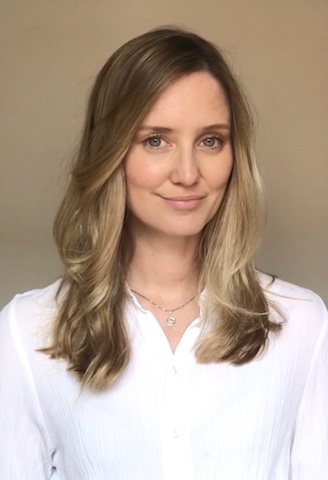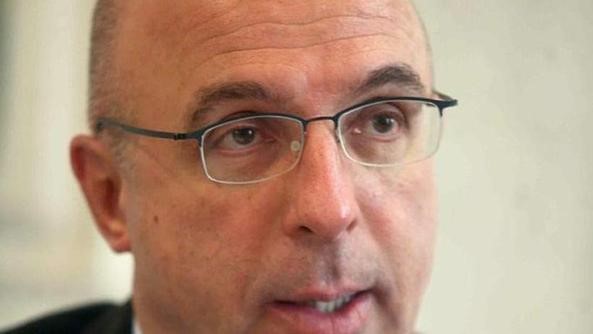Studying at the University of Verona
Here you can find information on the organisational aspects of the Programme, lecture timetables, learning activities and useful contact details for your time at the University, from enrolment to graduation.
Academic calendar
The academic calendar shows the deadlines and scheduled events that are relevant to students, teaching and technical-administrative staff of the University. Public holidays and University closures are also indicated. The academic year normally begins on 1 October each year and ends on 30 September of the following year.
Course calendar
The Academic Calendar sets out the degree programme lecture and exam timetables, as well as the relevant university closure dates..
| Period | From | To |
|---|---|---|
| Lezioni 1 Semestre PERF | Oct 1, 2018 | Dec 21, 2018 |
| Lezioni 2 Semestre PERF | Mar 4, 2019 | May 11, 2019 |
Exam calendar
Exam dates and rounds are managed by the relevant Medicine Teaching and Student Services Unit.
To view all the exam sessions available, please use the Exam dashboard on ESSE3.
If you forgot your login details or have problems logging in, please contact the relevant IT HelpDesk, or check the login details recovery web page.
Should you have any doubts or questions, please check the Enrollment FAQs
Academic staff
Arici Cecilia
 cecilia.arici@univr.it
cecilia.arici@univr.it
 + 39 045 812 8266
+ 39 045 812 8266
 corinnabergamini@libero.it
corinnabergamini@libero.it
 giuseppe.faggian@univr.it
giuseppe.faggian@univr.it
 marco.ferdeghini@univr.it
marco.ferdeghini@univr.it
 045 812 47 84 (Segreteria) 045 802 74 89 (Segreteria di Istituto)
045 812 47 84 (Segreteria) 045 802 74 89 (Segreteria di Istituto)
Messa Michele Giuseppe
 anja.meyer@univr.it
anja.meyer@univr.it
 bruno.sandini@aulss8.veneto.it
bruno.sandini@aulss8.veneto.it
 rocco.tabbi@aovr.veneto.it
rocco.tabbi@aovr.veneto.it
 ruggero.tomei@alice.it
ruggero.tomei@alice.it
Study Plan
The Study Plan includes all modules, teaching and learning activities that each student will need to undertake during their time at the University.
Please select your Study Plan based on your enrollment year.
1° Year
| Modules | Credits | TAF | SSD |
|---|
2° Year activated in the A.Y. 2019/2020
| Modules | Credits | TAF | SSD |
|---|
3° Year activated in the A.Y. 2020/2021
| Modules | Credits | TAF | SSD |
|---|
| Modules | Credits | TAF | SSD |
|---|
| Modules | Credits | TAF | SSD |
|---|
| Modules | Credits | TAF | SSD |
|---|
Legend | Type of training activity (TTA)
TAF (Type of Educational Activity) All courses and activities are classified into different types of educational activities, indicated by a letter.
Morphological and functional fundamentals of life (2018/2019)
The teaching is organized as follows:
Learning outcomes
MODULO ANATOMIA UMANA Obiettivi formativi: Il corso è finalizzato all’apprendimento da parte dello studente dell’architettura e morfologia anatomica di organi, sistemi ed apparati e del significato funzionale della loro organizzazione complessiva nel corpo umano. Una buona conoscenza dell'anatomia topografica e delle caratteristiche morfologiche macroscopiche e microscopiche degli apparati di maggior interesse.
MODULO FISIOLOGIA Obiettivi formativi: Il corso fornisce le basi per la comprensione dell'organizzazione generale del corpo umano. Lo studente deve conoscere le modalità di funzionamento dei diversi organi, l’integrazione dinamica degli organi in apparati e i meccanismi generali di controllo funzionale in condizioni normali.
Program
------------------------
MM: FISIOLOGIA
------------------------
CELLULAR PHYSIOLOGY 1) Cellular homeostasis 2) Action potential and synaptic transmission 3) Skeletal muscle CARDIOVASCULAR APPARATUS 4) Cardiac autorhythmicity and cardiac impulse propagation 5) Heart nervous control 6) Excitement and cardiac contractility 7) Cardiac reflexes 8) Stroke volume 9) Cardiac output 10) ECG and cardiac cycle 11) Cardiac work and metabolism 12) Hemodynamic principles of the cardiovascular system 13) Vascular resistance 14) Capillaires, veins and lymphatics 15) Blood pressure 16) Cardiovascolar control RESPIRATORY APPARATUS 17) Respiratory mechanism 18) Pulmonary volumes and capacities 19) Ventilation and perfusion 20) Gas diffusion 21) Respiratory gas transport 22) Respiratory control KIDNEY APPARATUS 23) Nephron 24) Glomerular filtration rate and renal plasma flow 25) Reabsorption and secretion renal 26) Urine concentration and dilution 27) Idric and elecrolyte balance 28) Acid-base balance 29) Urination NERVOUS SYSTEM 30) Autonomic nervous system (sympathetic and parasympathetic control) 31) Adrenergic and cholinergic receptors
------------------------
MM: ANATOMIA UMANA
------------------------
Introduction to the study of human anatomy. The general structure of the organism and the anatomical terminology: anatomic position; surfaces and section planes; Movements Parenchymal Viscera; Hollow Viscera; Vascolo-nervous bundles. Topographical anatomy: General organization of the human body: surface of the body; Cavity Chest Abdomen Neck Head, limbs. Histology: Epithelial tissue (various types and glands), connective tissue (specialised connective tissues: bone, cartilaginous, adipose and blood), muscular tissue (smooth muscular tissue, skeletal and cardiac striate) and nervous tissue. Cardio-Circulatory apparatus: general; arteries Veins Microcirculation and biological barriers; Pulmonary circle and systemic circulation; arteries and veins of the great circulation; Elements of fetal circulation. The heart, detailed description of cardiac muscle, fibrous skeleton, organization of cardiac musculature and heart valve system. Cardiac cycle. Cardiac conduction system. Respiratory system: Notes to the bony structure of the skull, description of external nose and nasal passages; pharynx, larynx, trachea, bronchial tree; Lungs Pleure. Urinary tract: general; Kidney Renal pelvis; Ureter Bladder Male urethra and prostate gland; Female urethra.
Bibliography
| Author | Title | Publishing house | Year | ISBN | Notes |
|---|---|---|---|---|---|
| vanputte regan russo | Anatomia (Edizione 3) | idelson gnocchi | 2014 | 9788879475846 | |
| Anastasi et al | Anatomia Umana (Edizione 4) | Ed. Ermes | 2012 | ||
| KÖPF-MAIER P. | Anatomia Umana - Atlante | Edi-ermes Milano | 2000 | ||
| Pasqualino Panattoni | Anatomia umana. Citologia, istologia, embriologia, anatomia sistematica | Ed. Edra | 2009 | 8802081832 | |
| Netter F.H. | Atlante di anatomia fisiopatologia e clinica | Collezione CIBA | |||
| Poltronieri Roberto | Elementi di Fisiologia | EdiSES | 2018 | ||
| Netter | Testo-Atlante di Anatomia Umana Normale (Edizione 5) | Ed. Edra | 2014 | 8821439127 |
Examination Methods
The exam is written and includes the use of multiple choice questions (5 replies to each question of which only one is correct). The questions are 40
For each correct question it is assigned a point and there are no penalties for wrong answer.
Career prospects
Module/Programme news
News for students
There you will find information, resources and services useful during your time at the University (Student’s exam record, your study plan on ESSE3, Distance Learning courses, university email account, office forms, administrative procedures, etc.). You can log into MyUnivr with your GIA login details: only in this way will you be able to receive notification of all the notices from your teachers and your secretariat via email and soon also via the Univr app.
Graduation
Documents
| Title | Info File |
|---|---|
|
|
pdf, it, 89 KB, 20/11/23 |
Gestione carriere
Orario Lezioni
Documents
| Title | Info File |
|---|---|
|
|
pdf, it, 256 KB, 15/04/24 |
|
|
pdf, it, 194 KB, 03/04/24 |
|
|
pdf, it, 186 KB, 04/04/24 |
Appelli d'esame
in questa pagina verranno pubblicati i calendari degli esami del Corso di Laurea
Documents
| Title | Info File |
|---|---|
|
|
pdf, it, 128 KB, 16/04/24 |


















